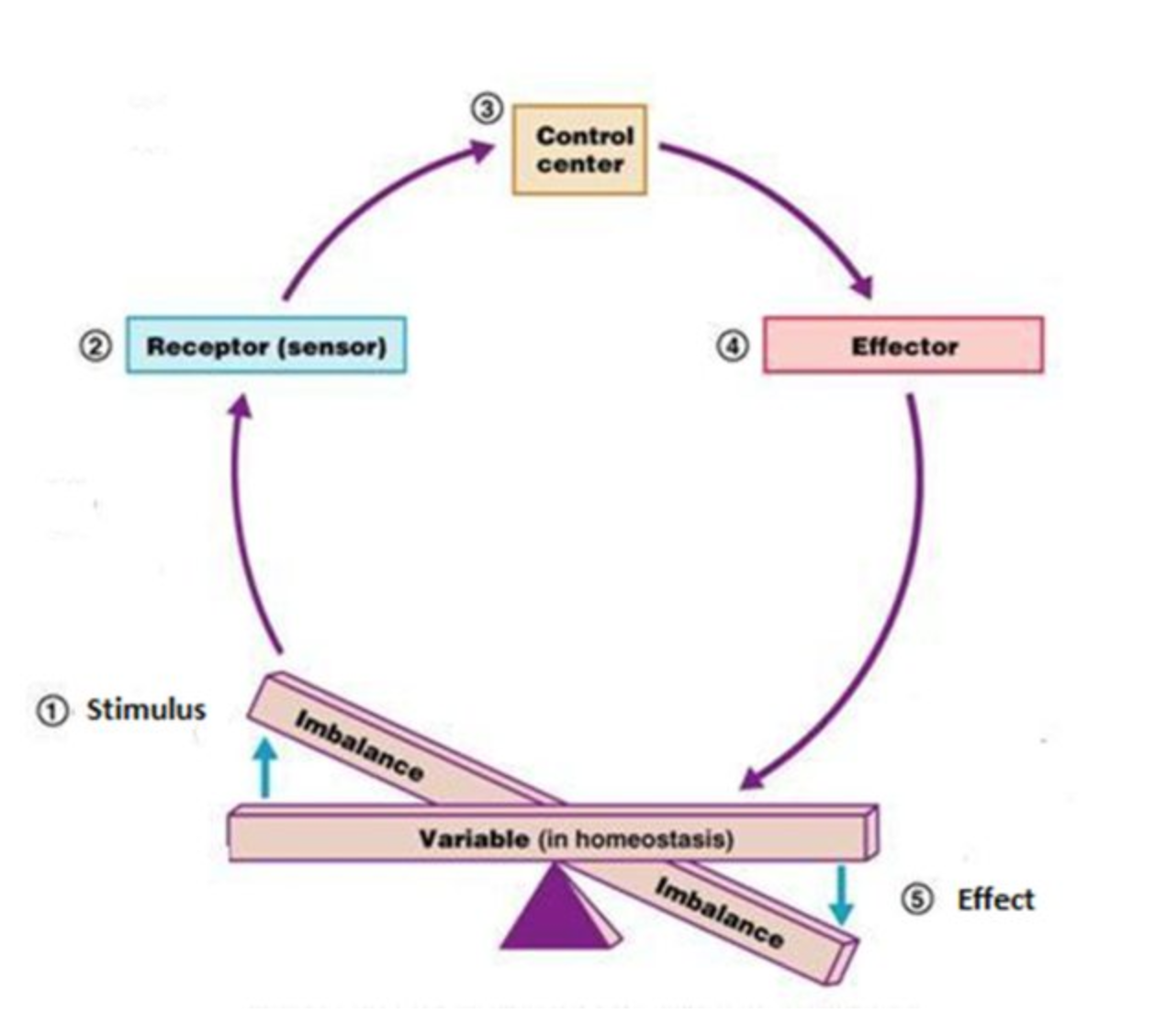Homeostasis
Our bodies are constantly working to maintain a state of balance. You may have heard of the term, homeostasis, which is the dynamic regulation of adaptive responses to changes in the internal and external environments using energy from nutrients. The homeostatic response tries to balance input and output in order to stabilize the internal set point. To do this, the body requires sensors to detect the change and the means to produce a compensatory response. A reflex is an involuntary response to a stimulus. Receptors send the afferent sensory information to the brain’s integrating center which sends efferent information down to the effectors. Body temperature is an example of a stimulus. The thermoregulatory system operates using negative feedback. For example, when you are cold, you tend to get goosebumps, shiver, and constrict your peripheral blood vessels in order to keep your core body temperature warm. This is negative feedback because a change in the internal variable leads to responses that shift the variable back to its set point. The body also utilizes positive feedback loops. An example is oxytocin secretion. Oxytocin is a hormone that is released during birth and promotes uterine contractions. As the uterus contracts, the brain signals for more oxytocin to be released. Here, a change in the internal variable causes a response that pushes the variable even further from the set point.
Picture Source: pathwayz.org

